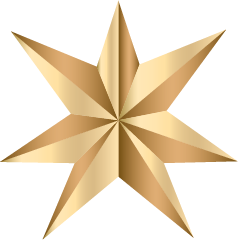the origins
Champagne Tange-Gerard is a micro brand and family business, established in 2009 by Alain Gérard and Solveig Tange. We are based in the village of Soulières, south of the capital of Champagne, Épernay, in the department of la Marne. Geographically in Northern France, 150 kilometers east of Paris.
Alain Gerard learned winegrowing from his mother, grandfather and uncle. Since he worked with his cousin for 10 years.
From the late 1990s, he began to deal with his first family vineyard.
Today, Alain has widened these practical skills with his own thinking. A logic, that combines his higher engineering education with experience obtained through work with farmers and major food industries all over Europe spanning more than 20 years.
As a Dane and trained as a journalist and in computer-coding, Solveig Tange knew little about champagne when she arrived in the region in 2003. Her horizon quickly widened as she got involved in the work with the vines. Her first full grape harvest was in 2004, and in 2006, she passed her pruning exams. Since then other courses in the various areas of a champagne grower company has followed.
Since 2003 Solveig has tried to convey this new perspective of life in words and photos with her own at times different approach.
The first bottles of the classic line of traditional champagnes were sold in 2009. A line of plot champagnes joined the party in 2018. Now, Alain and Solveig cannot wait to land their first organic crop in 2024.

the grapes
The grape trinity of Champagne is Chardonnay, Pinot Meunier and Pinot Noir. At Champagne Tange-Gerard we grow approximately 60% of Chardonnay and 40% of Pinot Meunier and Pinot Noir.
At the heart is the white Chardonnay, that thrives in the Cote des Blancs region. This grape brings acidity together with aromas of flowers, fruits and more complex ones of butter or pastries.
Often squeezed in the middle, the black Pinot Meunier mediates between the other two. We like it for its own qualities too.
At first, it may reveal aromas of apples then yellow fruits and later autumnal ones of mushrooms and forest floor.
Finally, the likewise black Pinot Noir brings body and typical aromas are small red and black fruits like strawberries or blackberries followed by spices like cinnamon to a final stage of raisins, tobacco or coffee beans.
The vineyards are rather old from the 1960s and the 1970s mainly. They mature in a different way than younger vineyards, because older vines carry less and smaller grapes. Furthermore, the deep roots of old vines provide access to resources as well as better water supply during dry summers.

the terroir
Our domaine has a different elevation, climate and soil composition than the lower part of the Cote des Blancs. These extra 120 meters bring a more continental climate with slightly colder and dryer conditions.
Champagne is known for its chalk. We have vineyards on two different locations with a distance of about five kilometres between them.
Their soils are mixed and slightly different: In Soulieres, the chalk combines with loam, and in Loisy-en-Brie with clay. As these soils are not white, the heat penetrates more with higher risk of draught and competition between vines and grass.
These mixed soils are the centre of a lot of our attention.
We use shallow ploughing instead of herbicides and organic fertilizers.
Since 2019 we have sown green covers - a mix of plants with various properties - between the vines in order to increase the natural activity and to make the soil more nutritious and less compressed.
The natural resistance of the vines increases and this compensates for the competition between the plants.
All these elements influence the number and taste of the grapes.

the sustainability
Champagne Tange-Gerard is certified as sustainable winegrowers in Champagne. The chart contains a coherent set of environmentally respectful practices but is not ultimate.
Our aim is to be certified organic and biodynamic. We are in organic conversion from July 2021 which means that our first organic grape harvest will be in 2024.
We use small tools and machines for the work in the vineyards to impact the surroundings a minimum. Green covers of different plants between the rows of vines maintain the mulch layer of the soils.
The philosophy of sustainability is put in use everywhere at our place.
We limit packaging to the minimum and engage in renewable resources with solar panels, heat pump and collecting rain water.
The core is to use what has value. It is about not using more than you must, but preferably less. It is a lot about will, and this is not certified anywhere.

the star
The star is the symbol of Champagne Tange-Gerard. It is what links us with the village, the land, it is the origin of what we do.
Originally, we spotted the star with its seven branches on the top of the bell tower of the church in Soulieres. We liked its simplicity. However, it was slightly disturbing that this star never came out quite alike on our photos. Very likely because it turned out not to be a seven branched star at all.
A family member cut out two stars of five branches and moved these independently of each other.
Like this, he could recreate all possible positions of the seven-branched star on our photos. We understood that our star was not one piece of metal but two. Maybe that was how a small village like ours could afford a star that would act just a tiny bit more advanced than a flat piece of metal.
This kind of inventive approach, that kind of creativity is central and very dear to us. Since this is probably the most important quality of all when you run a very small company like Champagne Tange-Gerard.







